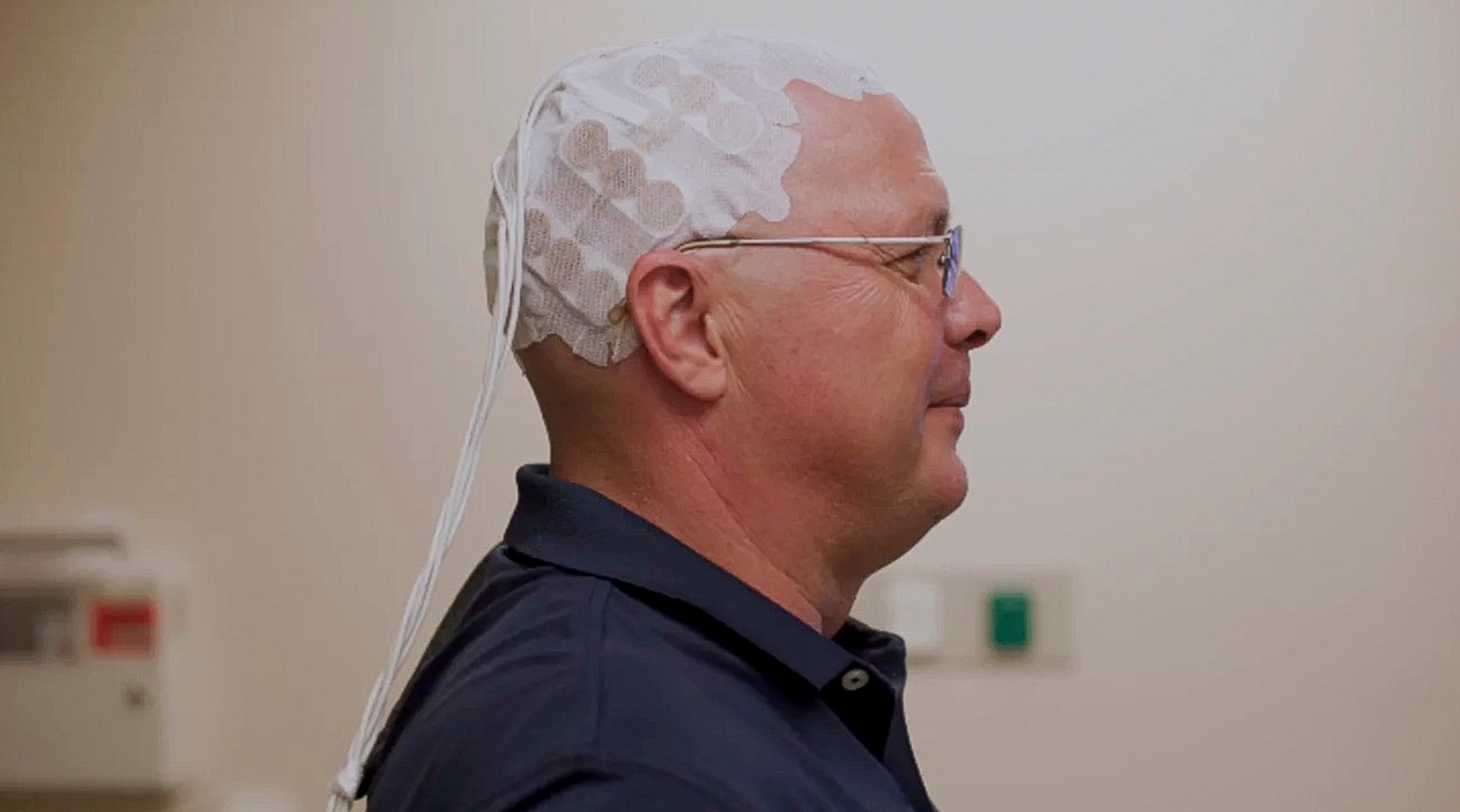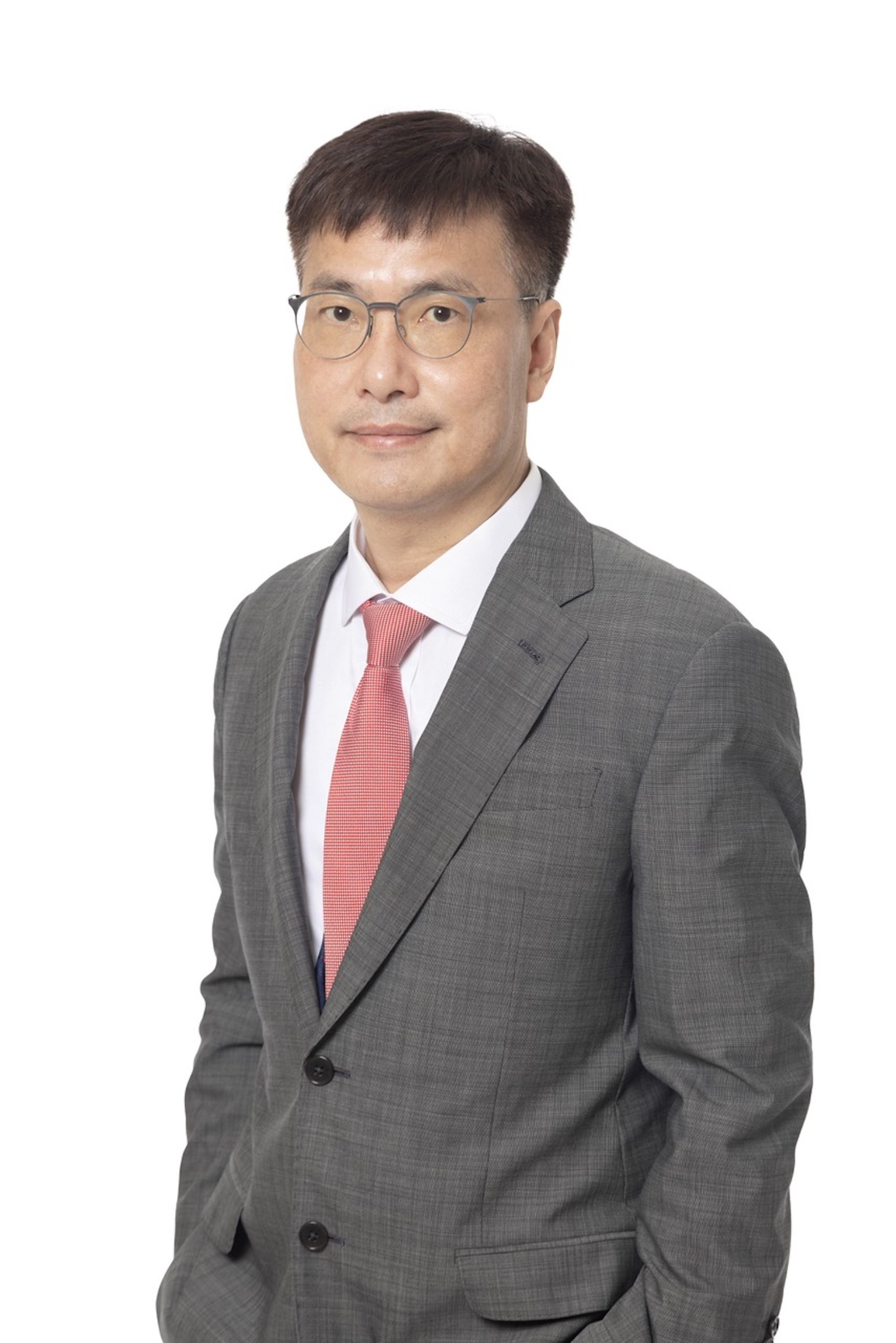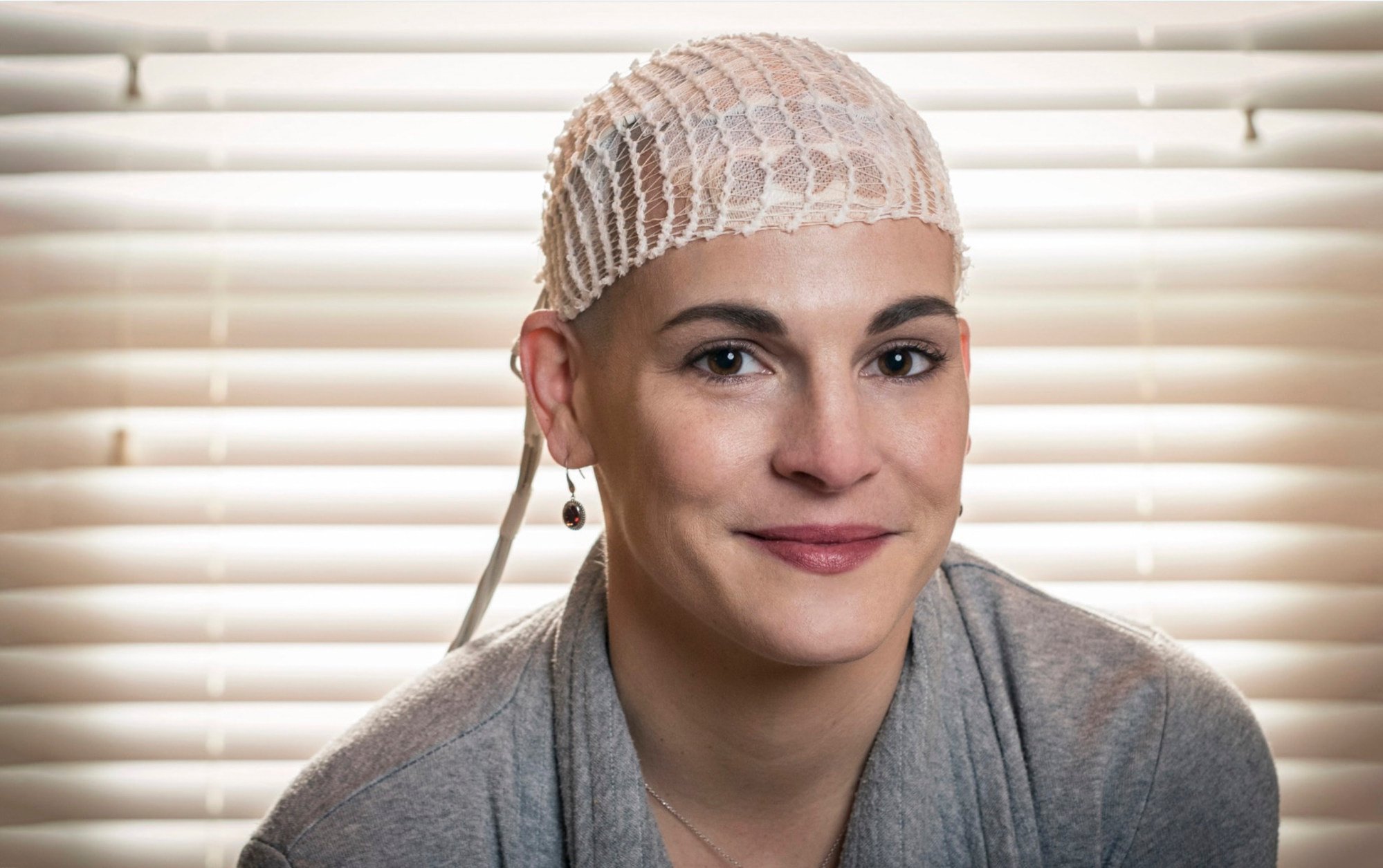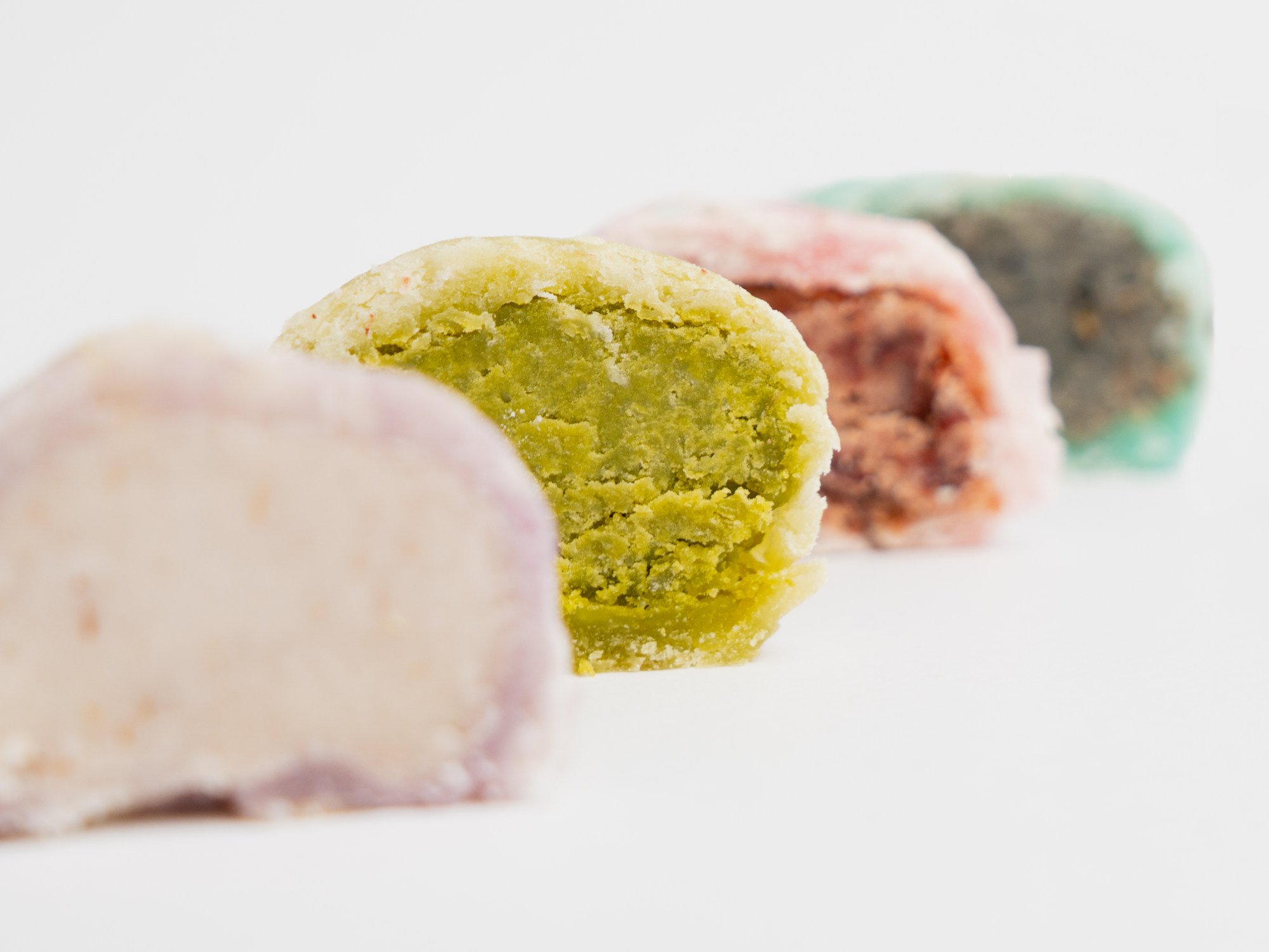
How a new brain cancer treatment is helping ex-Hong Kong firefighter keep his aggressive tumour in check after chemotherapy failed
- Leung King-yin has survived an aggressive brain cancer for much longer than expected with the help of Tumour Treating Fields (TTFields) therapy
- With the exception of occasional joint pain, vision problems and mood fluctuations, Leung believes that he is doing OK – with his family by his side
In 2018, at the age of 51, Leung King-yin began to experience memory loss and had difficulty speaking.
He consulted his family doctor, who, thinking that Leung had had a stroke, referred his patient for an urgent CT (computerised tomography) scan.
The scan revealed a shadow in the region of Leung’s brain that controlled his emotions. He underwent two surgeries almost right away to remove a large brain tumour.
Soon after, he was diagnosed with grade 4 astrocytoma, also referred to as glioblastoma, or GBM, the most common type of malignant brain tumour in adults.
Leung was at a loss as to how to process the news.
“Everything happened so fast,” says the Hongkonger, who is 56 this year.
“My family and I were unprepared for the diagnosis, so it came as a huge shock to us. I was especially concerned about our financial situation.
“I was a fireman and I knew that if my vision and mobility deteriorated as a result of the illness, I would not be able to support my wife and daughter anymore.”

Leung also didn’t understand much about his condition, except that he’d had a brain tumour removed and that it might grow back.
“For six weeks after the surgeries, I underwent chemotherapy and radiotherapy, but six months later, the doctors discovered another growth in my brain,” Leung says.
In April 2020, he started Tumour Treating Fields (TTFields) therapy to control the tumour’s growth.

TTFields is a relatively new and innovative, non-invasive treatment. It involves fixing a thin cap to the patient’s scalp, which delivers low-intensity alternating electric fields to prevent the growth and division of cancer cells.
When cancer cells cannot divide normally, they self-destruct. Over the course of weeks or months, more tumour cells die and the tumour shrinks.
TTFields does not cause side effects like pain, nausea, fatigue or diarrhoea, all of which are typical of chemotherapy and radiation.
It is the only treatment that Leung is having at this time.
Since his diagnosis five years ago, his wife and 28-year-old daughter have been providing physical and emotional support.
“While my dad can take care of himself when it comes to day-to-day tasks, he needs assistance changing the [transducer] arrays [in the cap] every three or four days – something that my mum helps him with,” says Leung’s daughter Sharon.
“I play more of an emotional support role, not just for my dad but for my mum, too. The diagnosis shocked all of us, and my mum and I had a difficult time understanding what was happening. All we knew about GBM at the time was that it was aggressive and that most patients had a low chance of survival.
“It’s been tough seeing my dad unable to verbally express himself, due to problems with his speech. He also forgets things easily and experiences mood fluctuations from time to time because of the disease.
“The last few years have been challenging, but my mum and I are doing our best to support my dad.”
The median overall length of survival of newly diagnosed GBM patients may range from 16 to 20.9 months, depending on the treatments they receive
GBM is a highly malignant tumour that starts and grows in the brain, says Dr Joseph Siu-Kie Au, a clinical oncologist and president of the Hong Kong Precision Oncology Society.
This type of brain tumour falls under the glioma tumour group, under the subtype of astrocytomas. These are graded on a scale of one to four, four being the most aggressive. GBM can occur anywhere in the brain, but usually forms in the frontal and temporal lobes, Au says.
GBM symptoms depend on where it occurs. As it grows and puts pressure on the brain, the tumour may cause blurred or double vision; headaches; loss of appetite; memory problems; mood or personality changes; muscle weakness or balance problems; nausea and vomiting; seizures; speech problems; and changes in sensation, numbness or tingling.

According to the Hong Kong Cancer Registry, there were 143 new GBM cases in the city in 2020, compared to 126 new cases in 2018.
“The median age of diagnosis is 64 years and the condition is more common in men than in women,” Au says.
“The median overall length of survival of newly diagnosed GBM patients may range from 16 to 20.9 months, depending on the treatments they receive.”
The origin of most cases of GBM is unknown, but Au says that factors associated with GBM risk include prior therapeutic radiation and impaired immune response.

GBM is treated with surgery – to remove as much of the tumour as possible without injuring the surrounding normal brain tissue – followed by radiation therapy and chemotherapy. TTFields is introduced during the maintenance phase of treatment.
“The goal of radiation therapy is to selectively kill the remaining tumour cells that have infiltrated the surrounding normal brain tissue,” Au says.
Patients undergoing chemotherapy have drugs designed to kill tumour cells. Chemotherapy is done daily during radiation therapy and then intermittently for six cycles after radiation.
Some GBM patients can handle day-to-day tasks while undergoing these treatments, Au says.
Leung describes his current condition as “stable”. After his two surgeries, his doctor told him that he probably had only three years to live. Five years on, Leung is still doing what he can to stay healthy and positive.
He retired from firefighting two years ago and, since Hong Kong’s pandemic-related restrictions were lifted, he’s been going for regular walks outdoors and catching up with friends. He also does volunteer work.
With the exception of the odd bout of joint pain, occasional vision problems and mood fluctuations, Leung believes that he is doing all right.
“My days aren’t always easy. I know that I cannot control the outcome of this disease, but I’m grateful to be receiving excellent care and to have a loving wife and daughter by my side,” he says.
He plans to continue to live as full a life as possible and help other GBM patients.
“I want to show them that we can still face the challenges and enjoy life. It’s important not to ruminate over how many years we have left. Instead, we need to focus on our treatments and not give up.”
Floral art and pastries to help raise funds and awareness for GBM
This May, attend a floral art installation or buy a “Baked Bloom” pastry as part of The Brain Light (Bring Light) campaign, to raise funds for the Cancerinformation.com.hk Charity Foundation (CICF). The campaign aims to make it easier for underprivileged GBM patients to access TTFields therapy.
Au conceived the campaign and worked with Jo Soo-Tang, founder of Rén, a social enterprise that aims to support Hong Kong youth by helping them to acquire skills and experience, to bring it to life.
The campaign centres on an interpretative art installation that uses flower images designed to represent brain scans.

The displays will be arranged with lighting along the corridor at BaseHall 02, a food hall in Central’s Jardine House, throughout May. As visitors walk by, the flowers will change their shape and colour.
Boxes of bloom-shaped pastries will also be on sale from Rén in May, with funds raised going to support CICF.
A box containing four different flavours – sesame, matcha, red bean and taro – costs HK$120 (US$15) per box. Individual pastries are HK$35 each.

Visit the display at BaseHall 02, LG/F, Jardine House, 1 Connaught Place, Central.

